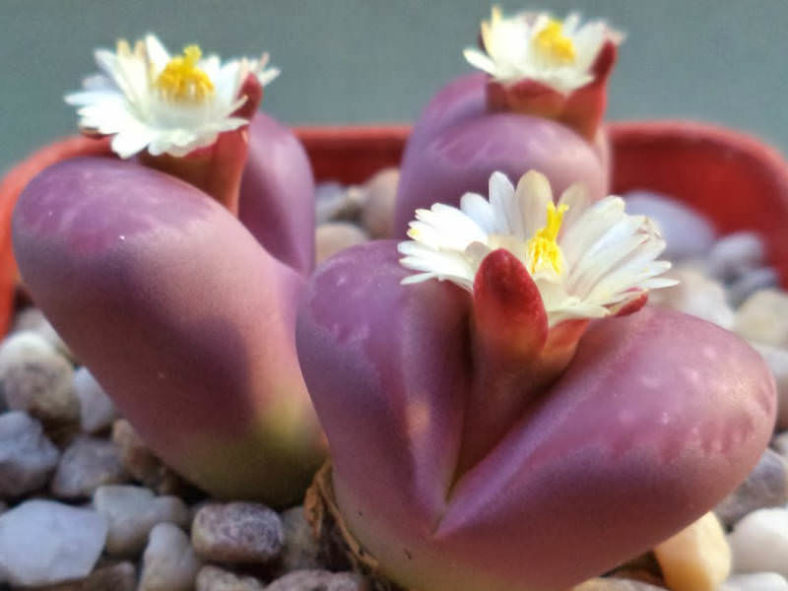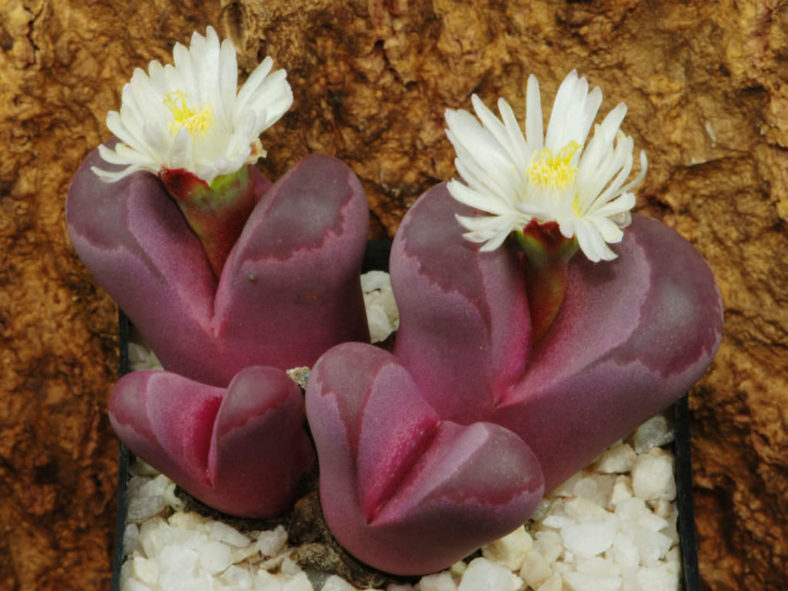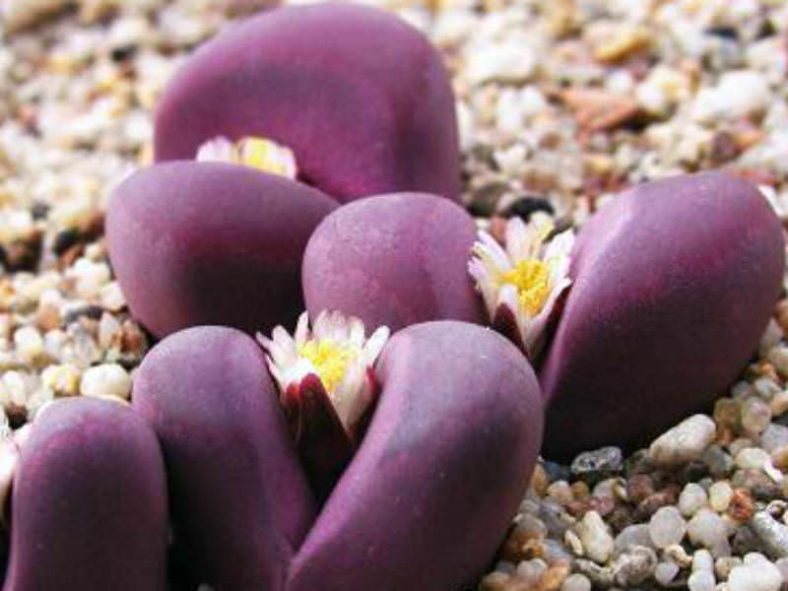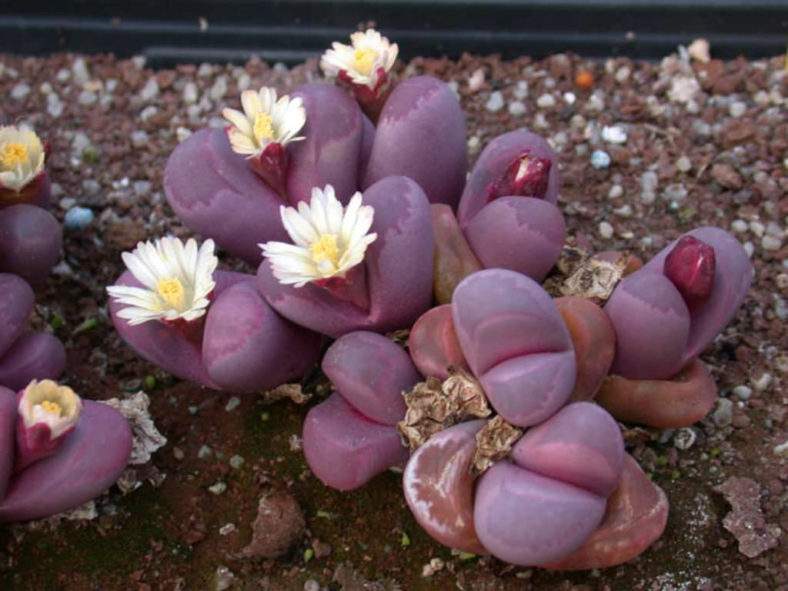Scientific Name
Lithops optica f. rubra (Tischer) Jacobsen
Common Name(s)
Living Stones
Synonym(s)
Lithops optica var. rubra, Lithops optica subsp. rubra, Lithops rubra, Mesembryanthemum opticum var. rubrum
Scientific Classification
Family: Aizoaceae
Subfamily: Ruschioideae
Tribe: Ruschieae
Genus: Lithops
Etymology
The formal epithet "rubra" (pronounced "ROO-bruh") means "red (color); ruddy" and refers to the color of the bodies of this form.
Origin
Lithops optica f. rubra is a form of Lithops optica found West of Lüderitz in Namibia. However, it is not recognized as a separate form and is treated as a synonym of Lithops optica. This form is commonly sold as a cultivar under the name Lithops optica 'Rubra', which does not follow the rules for writing cultivar names.
Description
Lithops optica f. rubra is a stunning succulent that has bodies consisting of two opposite leaves with milky pink to purplish-red sides and a light to dark ruby-red window on the top surface. The obconical, almost club-shaped bodies can grow up to 1 inch (2.5 cm) in diameter.
Each body will produce a white flower, sometimes with pink tips. The flowers can reach a diameter of 1 inch (2.5 cm) and appear in the fall. They open early on sunny days and then close later in the day.

How to Grow and Care for Lithops optica f. rubra
Hardiness: USDA hardiness zones 10a to 11b: from 30°F (1.1°C) to 50°F (10°C).
These plants develop a new set of leaves every year, with new leaves emerging in the fall, growing through winter, and continuing into summer. Lithops will go dormant in late summer, and water should be severely restricted to prevent bursting leaves. The flowers appear near the end of summer or fall, first showing up as a small bud forcing its way between the leaves, and growth will begin again. It's safe to water during this period. The leaves will still grow into the winter, but you should stop watering, even as the older leaves shrivel and encase the new growth. In the spring, it's safe to begin lightly watering again as the plant starts to grow back, heading toward its summer dormancy period and the emergence of new leaves in the fall.
Lithops are very slow-growing, small plants, making them ideal as houseplants (once you get the hang of their watering schedule). Older plants form attractive clumps of "pebbles" in their pots, which are highly prized. In general, plants should only be repotted if there are cultural problems (such as soggy soil) or the plant has outgrown its container, which typically occurs every several years.
See more at How to Grow and Care for Lithops.
Links
- Back to genus Lithops
- Succupedia: Browse succulents by Scientific Name, Common Name, Genus, Family, USDA Hardiness Zone, Origin, or cacti by Genus
Photo Gallery
Click on a photo to see a larger version.


